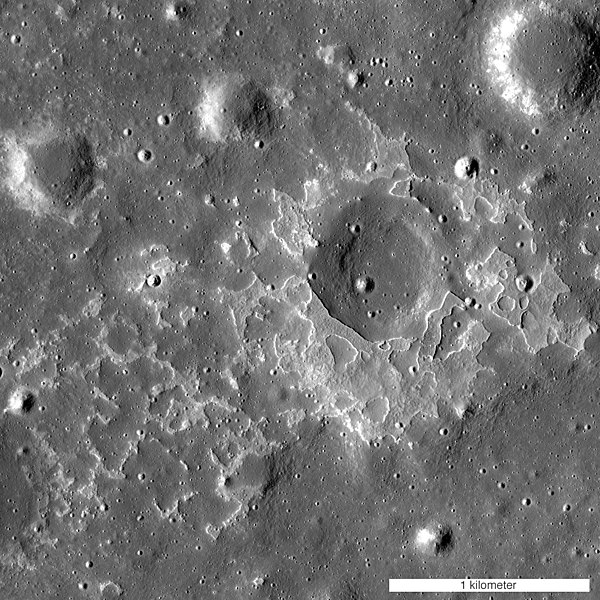Mare Serenitatis is a lunar mare located to the east of Mare Imbrium on the Moon. Its diameter is 674 km (419 mi).
Photograph of Mare Serenitatis
Some of the strongest tonal, color, and structural contrasts among mare materials occur in Mare Serenitatis. This color Apollo 17 image shows that the dark materials were emplaced before the lighter materials near the top.
The lunar maria are large, dark, basaltic plains on Earth's Moon, formed by lava flowing into ancient impact basins. They were dubbed maria by early astronomers who mistook them for actual seas. They are less reflective than the "highlands" as a result of their iron-rich composition, and hence appear dark to the naked eye. The maria cover about 16% of the lunar surface, mostly on the side visible from Earth. The few maria on the far side are much smaller, residing mostly in very large craters. The traditional nomenclature for the Moon also includes one oceanus (ocean), as well as features with the names lacus ('lake'), palus ('marsh'), and sinus ('bay'). The last three are smaller than maria, but have the same nature and characteristics.
Ancient rift valleys – rectangular structure (visible – topography – GRAIL gravity gradients) (1 October 2014)
Ancient rift valleys – context.
Ancient rift valleys – closeup (artist's concept).
Irregular mare patch – evidence of young lunar volcanism (12 October 2014)






